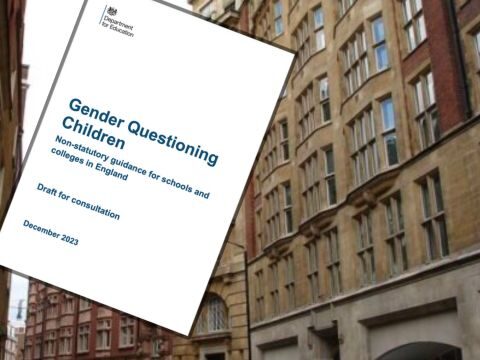



They cover a range of issues to do with behaviour, relationships, sexuality, sexual orientation and gender, raising profound moral issues that have divided humankind throughout history. Michael Petek, in this article, focuses on one area where the summary statements in the RSE Guidance about the range of “contraceptive choices” to be taught may not give due weight to the very serious legal implications involved.
ParentPower is happy to publish this article as a contribution to the debate on the RSE Guidance: the views expressed and the interpretation of law are those of the author himself, and are not necessarily shared or endorsed by ParentPower.
LEGALLY ACCURATE? What to Teach Children under the new RSE
The statutory guidance on Relationships and Sex Education (RSE) and Health Education given by the Secretary of State lays down a new curriculum which has been compulsory from September 2020.
The guidance for secondary schools includes a section on intimate and sexual relationships, including sexual health. It prescribes that pupils should know that the facts about the full range of contraceptive choices, efficacy and options available; and that there are choices in relation to pregnancy, with medically and legally accurate, impartial information on all options, including keeping the baby, adoption, abortion and where to get further help.
“Legally accurate” information on abortion obviously includes that based on sections 58 and 59 of the Offences Against the Person Act 1861 and the Abortion Act 1967. However, if justice be done to the question, it ought also to be based on the International Criminal Court Act 2001, which commenced on 1st September 2001. Section 51 of the Act makes it an offence against the law of England and Wales for a person to commit genocide, a crime against humanity, or a war crime.
The 2001 Act incorporates the provisions of the Rome Statute of the International Criminal Court 1998 into domestic law. The matter of interest is crimes against humanity and what these have to do with abortion and contraception.
In domestic law, a human embryo or foetus in the womb cannot be a victim of a crime of violence. If it dies in the womb it cannot be a victim of murder or manslaughter. But once it has been born alive, then any harm or death which occurs after birth from an injury received in the womb is legally actionable in criminal law.
In international law, not only a human being born alive, but also a human embryo or foetus that dies in the womb, is a person and a victim of murder if wilfully killed. For there to be a crime against humanity, the murder must be committed as part of a widespread or systematic course of conduct directed against any civilian population – in wartime or peacetime – pursuant to state or organisational policy. If the course of conduct is on a large scale and there is a great number of victims, then it is widespread. If the acts of violence have an organised nature and are improbably random, then it is systematic. If a murder is committed as part of a mass killing event, then there is a crime of extermination.
That abortion is murder in international criminal law was the reason for the decision of the Nuremberg Military Tribunal to include it in the Indictment of defendants as a crime within its jurisdiction in the case of United States v Greifelt and others [1948] in relation to war crimes and crimes against humanity according to the law the Tribunal was given to apply. This did lead to convictions.
The term ‘crimes against humanity’ can be read as shorthand for ‘crimes against the conscience of civilised humanity’. The purpose of international criminal law is to ensure that the the external forum follows the judgement of the conscientious objector so that atrocities which deeply shock and outrage the conscience can be prosecuted and punished. The law of the land, at section 4 of the Abortion Act 1967 and section 38(1) of the Human Fertilisation and Embryology Act 1990, gives privileged recognition to medical professionals whose consciences identify the human embryo and foetus as persons and their wilful killing to be murder.
What has this to do with contraception? All non-barrier contraceptives are capable in one way or another of rendering the uterine wall hostile to a newly conceived embryo, and can kill it by preventing implantation – see the judgement of Munby J in the case of Smeaton v Secretary of State for Health [2002] EWHC 610 (Admin). A person who uses one of these knowing of its embryocidal potential may commit at least attempted statutory murder.
There is a remarkable agreement between Pope John Paul II, and Ann Furedi, former Chief Executive of BPAS, the leading provider of abortion in the UK. In Evangelium Vitae, the Pope observed at paragraph 13 that abortion and contraception are fruits of the same tree. Contraception strengthens the temptation to abortion where unwanted life is conceived. In her book The Moral Case For Abortion Furedi devotes much of Chapter 2 to demonstrating that abortion and contraception are inseparable, and that there is no point in taking either without the other.
These observations are correct. Contraception and abortion are related in at least two ways besides the fact that some contraceptives are potentially embryocidal. The decision to contracept and the decision to kill an innocent person share the common factor that the will is set against the life of another. The second is that the mass production and distribution of contraceptive substances and devices to the public at large are capable of encouraging or assisting the mass destruction of human beings by abortion, and may be criminally ancillary to the crime against humanity of extermination.
Michael Petek BA (Hons)






